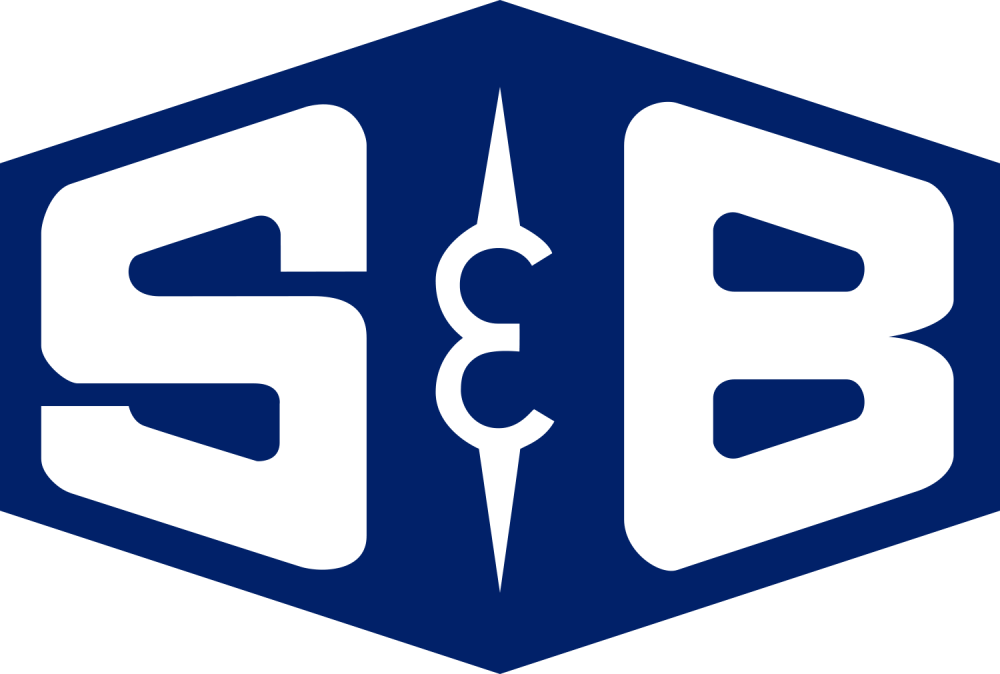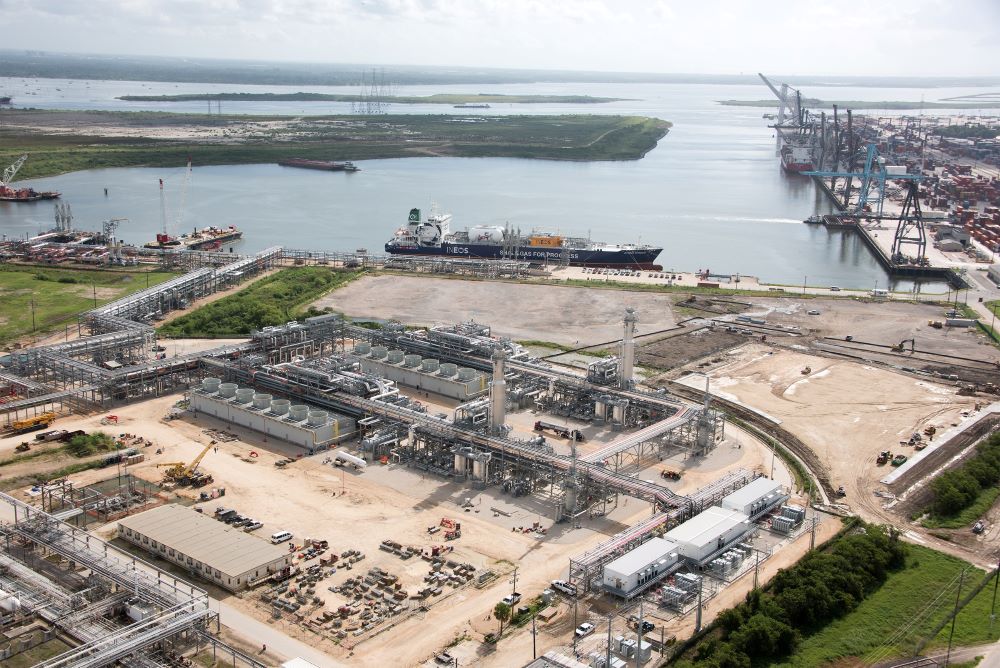
As a leading engineering, procurement, and construction (EPC) company for nearly 60 years, S&B specializes in delivering complex projects across midstream, gas processing, chemicals and refining, pulp and paper and energy transition sectors.
We spoke with Eric Lucas from the Special Projects Engineering Solutions team, which is responsible for leveraging new tools and automation to improve cost and schedule performance across the organization. He supports a range of initiatives, including FEED, bidding, and early-stage design. He shared the challenges they faced and how they realized the benefits of PlantStream.
Case Study from an EPC Perspective

● Manual 2-D mark-ups and spreadsheet material take-offs (MTOs) can take time and be resource-heavy, especially when layouts changed.
● Lack of quick 3D visuals in the proposal stage made it harder to align internally and with clients.
● Updating take-offs after every revision extended bid schedules.
● Ability to generate a “usable” routed model in a fraction of the man-hours required by traditional 3D platforms.
● Early tests showed MTO accuracy on par with established methods, easing stakeholder concerns.
● Low set-up overhead fits well with fast-paced estimating cycles.
● Conceptual modeling hours significantly reduced, allowing more time for value engineering.
● Simultaneous 3D visuals and quantity reports improve cross-discipline and client communication.
● Proposal teams can now present three layout options in days, not weeks.

Eric Lucas: S&B is a U.S.-based engineering, procurement and construction contractor that serves the process industries through four service lines—EPC, Major Projects Engineering, Alliance Engineering and Direct Hire Construction. We primarily service the midstream, chemical, petrochemical, energy transition, refining and pulp and paper industries.
We have designed a wide variety of plants in those industries including crude distillation, hydrotreating, propane dehydration, winder and roll handling, polymers, biofuels, hydrogen, methanol and ammonia. The Special Projects Engineering Solutions group pilots digital tools and workflows that support estimating, design and project planning across all disciplines company-wide.
I’ve spent 23 years in the industry—20 of them at S&B—moving from piping design and estimating into leadership roles focused on automating tasks, digitizing processes and breaking down silos so teams can work smarter.
Eric Lucas: Before PlantStream, we relied on long-standing manual workflows, such as marking up 2D plot plans, translating PFDs and P&IDs into material take-offs, and reworking everything each time the layout changed. These steps were resource-intensive and often impacted the efficiency and responsiveness of our bid process.
We also lacked a quick, credible way to show clients a 3D concept early on, which made it hard to align on layout ideas or design intent. Updating MTOs after every revision could add days to the process. All of that pushed us to look for a tool that could shrink iteration time and give us clear visuals from day one.

Eric Lucas: Yes. PlantStream is part of a broader modernization program.
We’re continuously improving our engineering tools with a focus on automation and centralizing data so that systems connect seamlessly, duplicate effort disappears, and decision-making speeds up. The goal is to build on our proven procedures—complementing, not replacing them—and deliver projects with fewer man-hours while maintaining quality.
Eric Lucas: We discovered PlantStream through a mix of industry conversations and our own internal tool-review sessions. Some of our colleagues heard about it at conferences and seminars, so it surfaced naturally during our discussions on early-phase design tools. What caught our attention was its ability to generate a routed 3D model and pull material data almost instantly, bypassing the traditional steps we were used to.
From day one, our goal was clear: speed up early modeling, cut the time spent on material take-offs, and introduce credible 3D visuals much earlier in the proposal cycle so teams could align faster and communicate scope more effectively.
Eric Lucas: The speed was the key differentiator. Within a few hours we could auto-route an entire rack, validate the routing for interferences and export a material take-off that used to take several days. The one-click MTO report is especially useful—estimators get clean, itemized quantities without waiting for a designer to finish mark-ups.
The modeling speed was a clear advantage. We were able to generate visuals and reports from the same model. The impact of changes made later in the conceptual phase was minimal because of the capabilities of the auto-routing functions and other features with PlantStream.

Eric Lucas: We looked at how the tool compared to our current methods in terms of usability, accuracy, and how well it could tie into other platforms. We also considered how accessible it would be for users outside of design roles, and what kind of man-hour savings it might enable. Cost and scalability were important factors, so we brought in stakeholders from several groups to weigh in. In parallel, we did some initial testing with our estimating group and PlantStream, which aligned well and helped build early confidence.
One of the Pipe Leads at S&B shared the following feedback:
“The ability to visually see the plant plot, make large-scale changes for optimization, then click a button and have everything rerouted within seconds is a game changer. It allows for ideas to be considered without worrying about the timeline. This improves our overall deliverable to our clients.”
Eric Lucas: The clincher was that PlantStream demonstrated both speed and reliability in a measurable way. We conducted pilot efforts with our estimating group, starting with rack MTO comparisons that matched our benchmarks and gradually expanded from there. That success gave us the confidence to apply PlantStream to more projects.
We involved stakeholders from different departments early on, including estimating, piping, structural, and others. What stood out most was the ability to generate a usable model with a relatively low barrier to entry. That speed, paired with the accuracy, led us to believe it could give us a strategic edge in fast-paced proposal scenarios.

Naturally there was some resistance at the start. Accuracy topped the worry list, followed by compatibility with legacy systems and the learning curve for designers. We tackled accuracy by reproducing a live project, and comparing quantities; the numbers spoke for themselves. As for the learning curve, we formed a champion team, created a quick-start guide and delivered focused training sessions in our Houston and India offices, so early successes could be showcased and shared. Framing PlantStream as a tool that refines, not replaces, our proven procedures turned sceptics into supporters.

Eric Lucas: We now try to deploy PlantStream mainly in the pre-FEED and estimating phases. Piping layout specialists in Houston and our India offices use it to validate early-stage layouts, auto-route entire rack systems and generate MTOs in minutes. The rapid 3D visuals let proposal teams present alternative concepts within days, not weeks, and give clients a clear picture of their plant far earlier than before. As a result, we have cut concept-modeling man-hours, eliminated most hand sketches and reduced spreadsheet take-offs, and strengthened alignment between estimating and design.
Internal teams appreciate faster data access and sharper presentation materials; clients routinely remark, “How did you produce a model that fast?” These improvements have resolved our original pain points around iteration time and scope clarity, especially in FEL 1/2 work, and they position us to expand usage across disciplines while supporting true 24-hour progress between the two offices.
Eric Lucas: The auto-routing engine is the standout. It saves time and removes a lot of manual effort. We also value the ability to quickly generate MTO reports. Another big advantage is being able to make layout adjustments without having to start over from scratch.
On the user side, our piping team in Houston and India are the primary operators—five to six users in total. The tool is a shared touchpoint between designers and estimators.
Eric Lucas: Support has been consistently responsive—despite the Houston-to-Tokyo time difference, most issues are resolved within one working day. The team also walks our power users through new features and supplies concise knowledge-base articles and video clips for smooth roll-outs across both offices. We would like to see continued improvement in the routing functionality, particularly as more complex scenarios arise in different project types. Ongoing development around multi-discipline integration would also be beneficial, especially as the tool is used more widely across various departments and functions. More step-by-step documentation as the feature set grows would also help new users come up to speed faster. Overall, though, the willingness to incorporate our feedback into the next sprint keeps confidence high.
Eric Lucas: We are in the process of writing the software into our standard operating procedures for pre-FEED and estimating, and we plan to widen its footprint. The immediate goal is to place structural steel and electrical trays in the same early-phase environment so that piping, civil and electrical teams can evaluate options together and reach decisions even faster.
In parallel, we are scaling training so that every major proposal group—Houston, India—has at least one power user. That structure will let Houston hand a model to India at day-end, India advance it overnight, and Houston wake up to a new iteration, effectively giving us around-the-clock progress.

Eric Lucas: We see it playing a key role in accelerating project development timelines, particularly in the early phases. It strengthens our competitive position during proposals by helping us respond more quickly to changes or client needs, and to present those changes more clearly. The ability to communicate scope visually in a 3D environment adds a layer of clarity that’s valuable in both internal planning and client-facing discussions.
Eric Lucas: For organizations involved in early-phase project development, tools like PlantStream can help streamline certain parts of the workflow. It’s especially effective in environments where quick turnarounds and fast communication are important. That said, it’s important to evaluate how the tool fits within your broader strategy and how it complements existing processes. The goal isn’t to reinvent the wheel—it’s to make the wheel faster, better, and more efficient.
Connect with an expert to start your PlantStream journey.
Realize more efficient 3D plant design through seamless workflows.

Subscribe to
Our Newsletter
PlantStream
Tel:+81-3-6222-8808
Address : 3rd Floor, KDX Hamamatsucho Building,
2-7-19, Hamamatsucho, Minato-ku, Tokyo,
105-0013, Japan